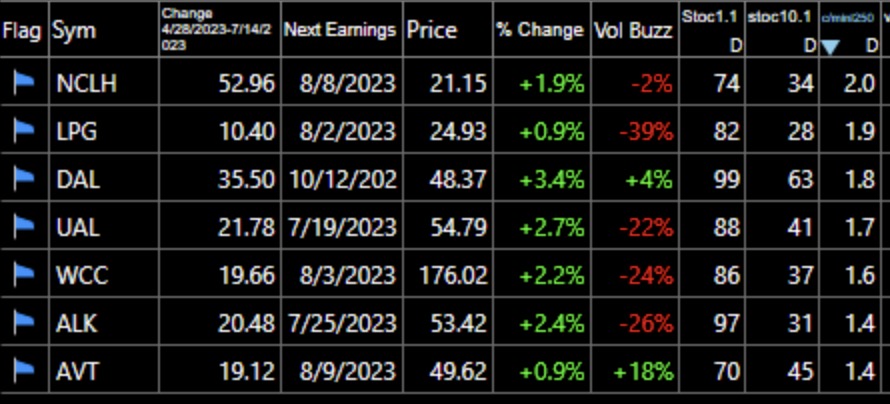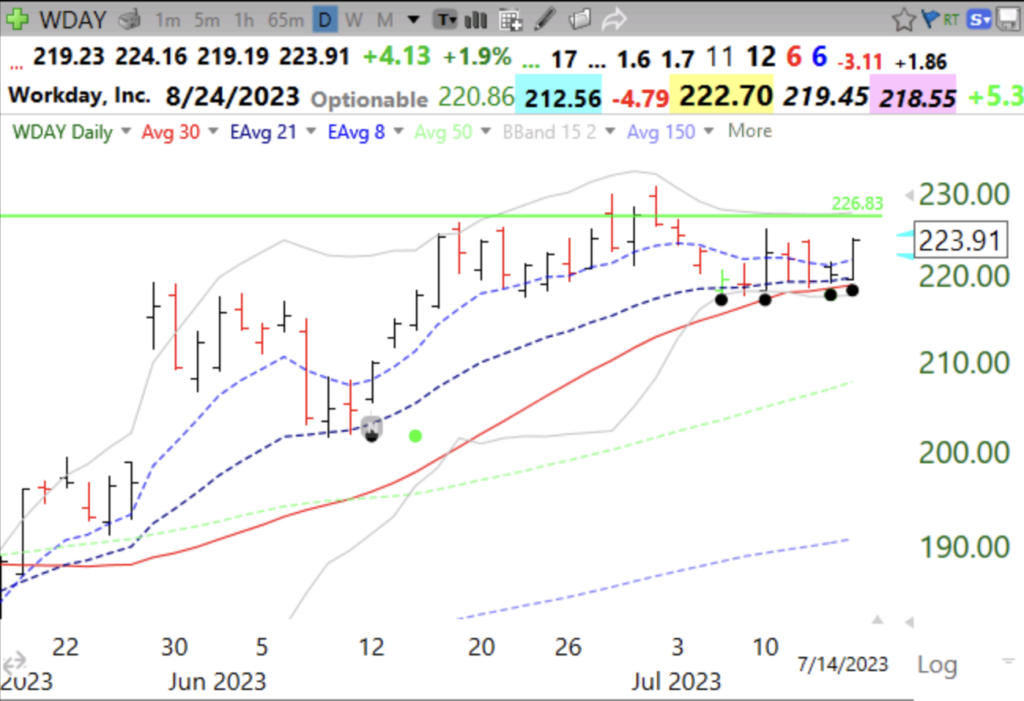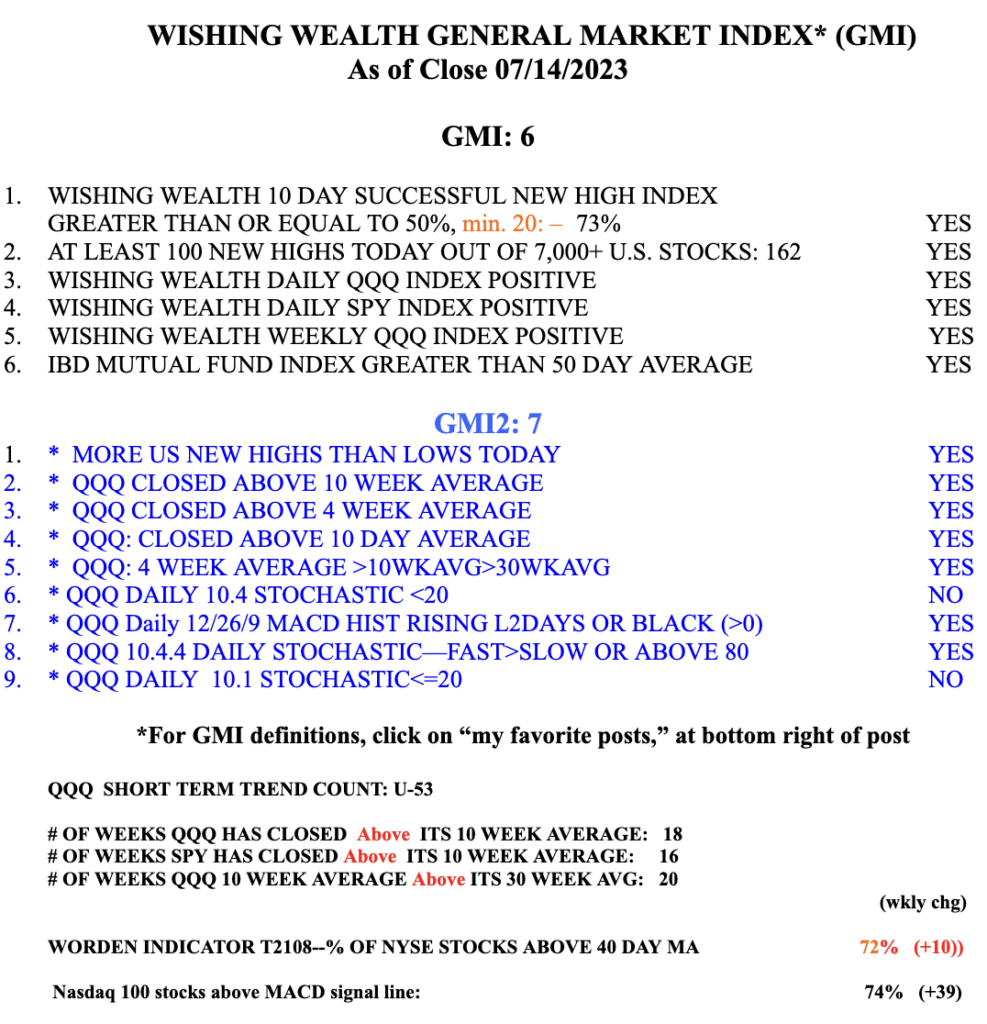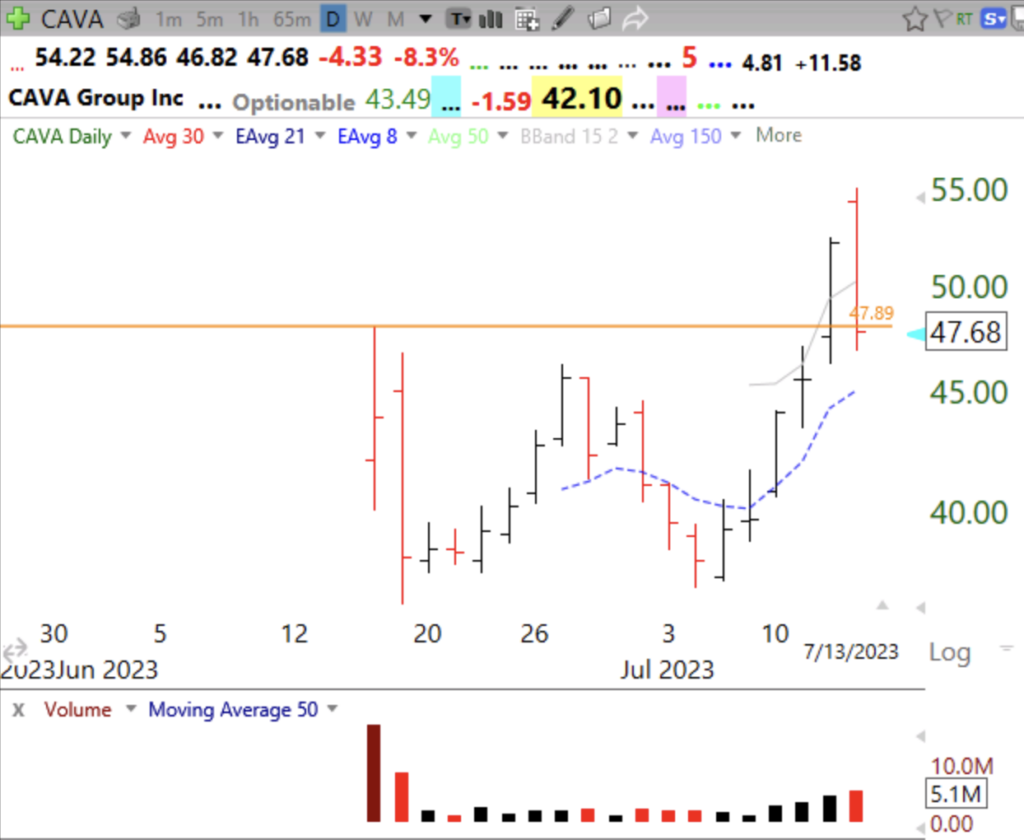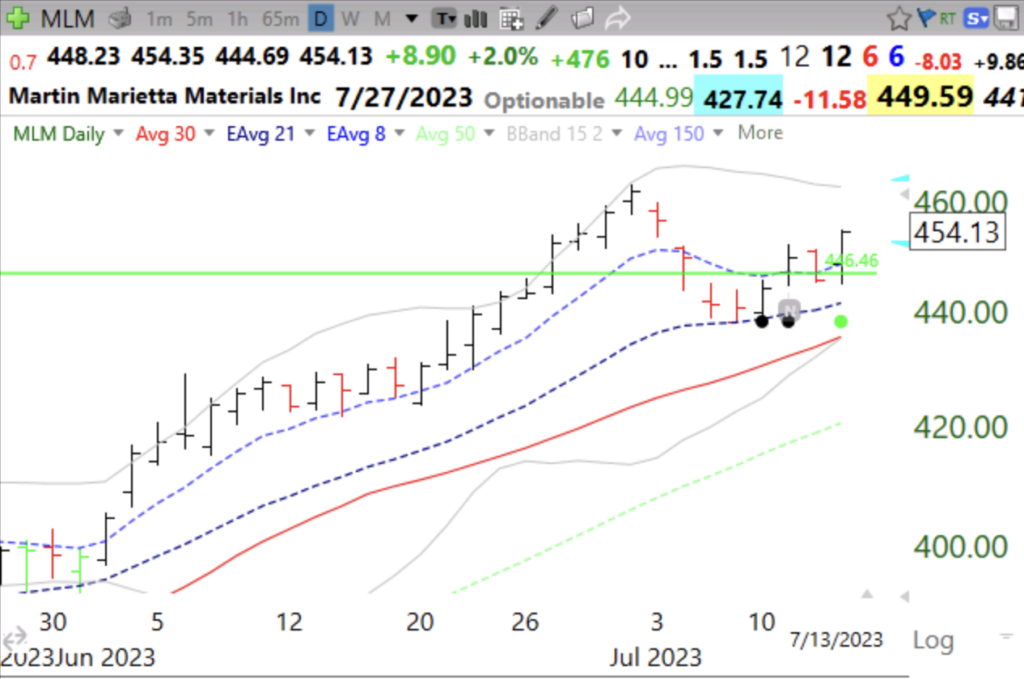Note that 3 are airlines, a good technical sign. Ranked by close today/lowest close past 250 days
Blog Post: Day 53 of $QQQ short term up-trend; 162 US new highs and 20 lows; GMI remains 6 of 6 and Green; 3 Growth stocks with a black dot OSB set-up Friday: $WDAY, $KNSL, $GLF
As I have written recently I like my Black Dot OSB set-up. These stocks have hit a recent new high and bounced up from oversold. After researching the fundamentals, I might buy one of these stocks and place my sell stop below the low of the bounce. If the bounce fails I exit immediately with a small loss. I like WDAY the best of the three stocks that came from my IBD/MS watchlist of promising stocks. WDAY has had several black dots and is also finding support near its bottom 15.2 Bollinger Band. Note the prior successful black dot bounce in mid June. The “N” indicates a note I wrote after buying it.
Blog Post: $CAVA’s break-out fails–why I prefer my OSB set-up over break-outs, see daily charts of $CAVA and $MLM.
CAVA opened up above the prior day’s high and closed back below its break-out line. Breakouts sometimes fail and if someone bought at Thursday’s open they would have a large loss. I find it more difficult to control my loss with a failed break-out. Where should one place their stop loss? It is not always easy to designate that in advance. However, with the OSB (oversold bounce) set-up it is much easier to determine the price where the set-up has failed. Place the stop just below the low of the bounce, the placed where the black dot appears. Look at CAVA’s chart and compare it to the chart of MLM with an OSB.
The black dot shows the days of the OSB set-up.
